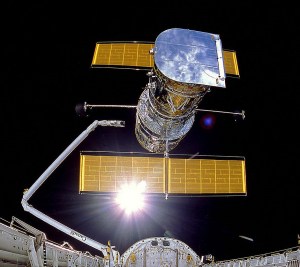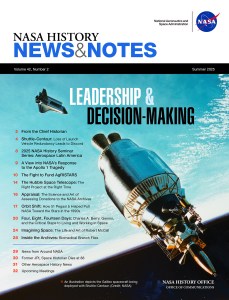“Three valiant young men have given their lives in the nation’s service. We mourn this great loss and our hearts go out to their families.” President Lyndon B. Johnson
“The deaths of these three brilliant young men … is a profound and personal loss to me. … The United States will push ever forward in space and the memory of the contributions of these men will be an inspiration to all future space-farers.” Vice President Hubert H. Humphrey
“We’ve always known that something like this would happen sooner or later, but it’s not going to be permitted to stop the program. … Although everyone realized that someday space pilots would die, who would have thought the first tragedy would be on the ground?” NASA Administrator James E. Webb
“The accident that took the lives of three of our highly trained, skilled and courageous American astronauts is a tragic loss to our entire nation.” Former President Dwight D. Eisenhower
“We in the Soviet Union are deeply grieved at the news of the tragedy at Cape Kennedy. The courage of Virgil Grissom, Edward White, and Roger Chaffee had won our esteem and we join in paying homage to their memories.” Radio Moscow
The nation’s Moon landing program suffered a shocking setback on Jan. 27, 1967, with the deaths of Apollo 1 astronauts Virgil I. “Gus” Grissom, Edward H. White, and Roger B. Chaffee in a flash fire aboard their spacecraft during a ground test on the launch pad. America honored the fallen heroes in funerals with full military honors. NASA established an investigative board to determine the cause of the fire and, in the months that followed, the board identified both technical and management lapses that led to the accident. The board published their findings and determinations. Congressional committees held hearings to fully understand the accident’s causes and NASA’s planned changes to prevent a recurrence. They included a redesign of the Apollo spacecraft and management and safety culture changes.
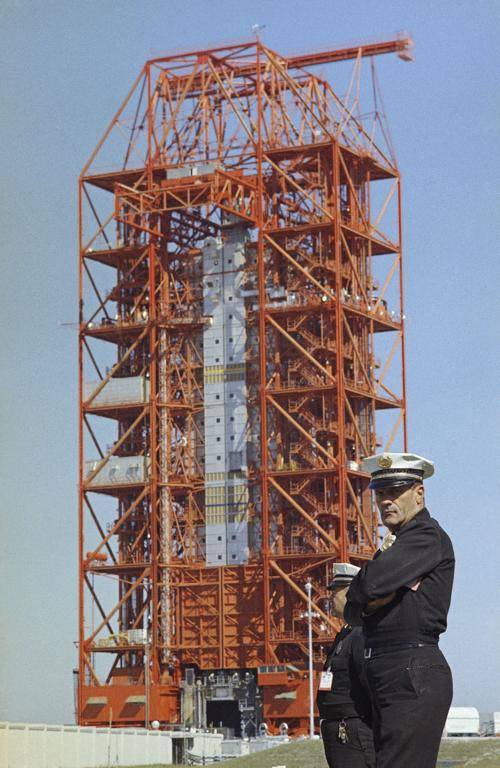
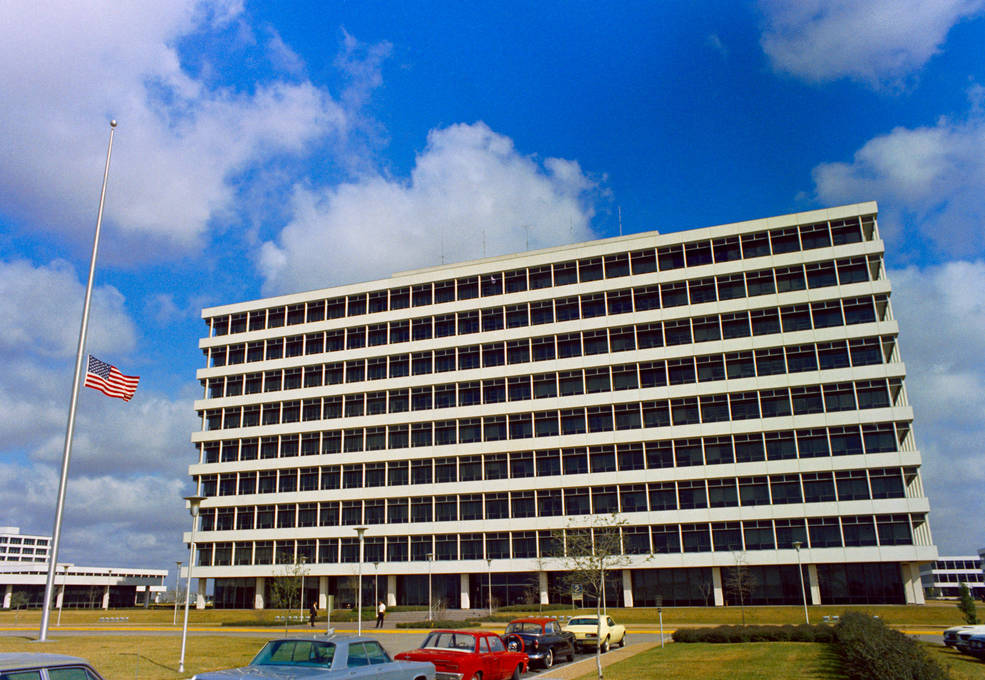
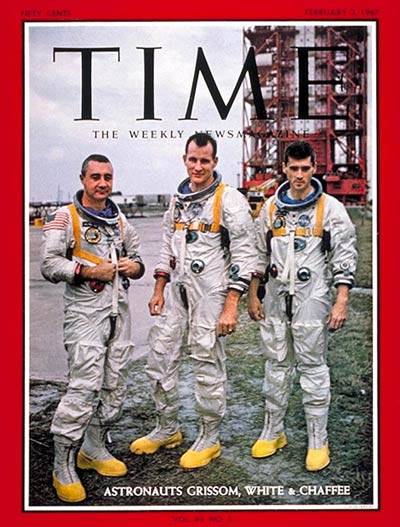
Left: A security guard stands watch at Launch Complex 34 at Cape Kennedy on Jan. 28, 1967, the day after the fire that killed Apollo 1 astronauts Virgil I. “Gus” Grissom, Edward H. White, and Roger B. Chaffee. Middle: To honor the loss of the Apollo 1 astronauts, the American flag flies at half-staff in front of the Project Management Building at the Manned Spacecraft Center, now NASA’s Johnson Space Center in Houston. Right: The Feb. 3, 1967 cover of TIME magazine honoring the lost Apollo 1 crew.
Astronauts Grissom, White, and Chaffee, clad in their spacesuits inside their Command Module (CM) at Cape Kennedy’s Launch Complex 34, were conducting a countdown simulation ahead of their planned Feb. 21 launch. Their mission, officially called Apollo 204 but better known as Apollo 1, was to be the first piloted Apollo flight. As they would on launch day, the astronauts and ground crews sealed the three hatches of the capsule and pressurized it with pure oxygen at 16.7 pounds per square inch (psi), slightly higher than atmospheric pressure. At 6:31 p.m., a flash fire broke out inside the cabin. Within seconds, rising temperatures and pressures caused the CM pressure vessel to crack, releasing flames and smoke onto the launch pad’s service structure. The astronauts, in vain, attempted to open the inner hatch, while the pad crew valiantly worked to open the outer two hatches, their attempts hampered by dense smoke and heat. By the time they opened the hatches, the crew had already perished. Later that night, after photographers fully documented the scene, recovery crews removed the astronauts’ bodies from the spacecraft and took them to a nearby medical facility. U.S. Air Force pathologists conducted examinations, concluding that the astronauts died of asphyxia from carbon monoxide and other toxic gases resulting from the fire. The burns they received were likely survivable.
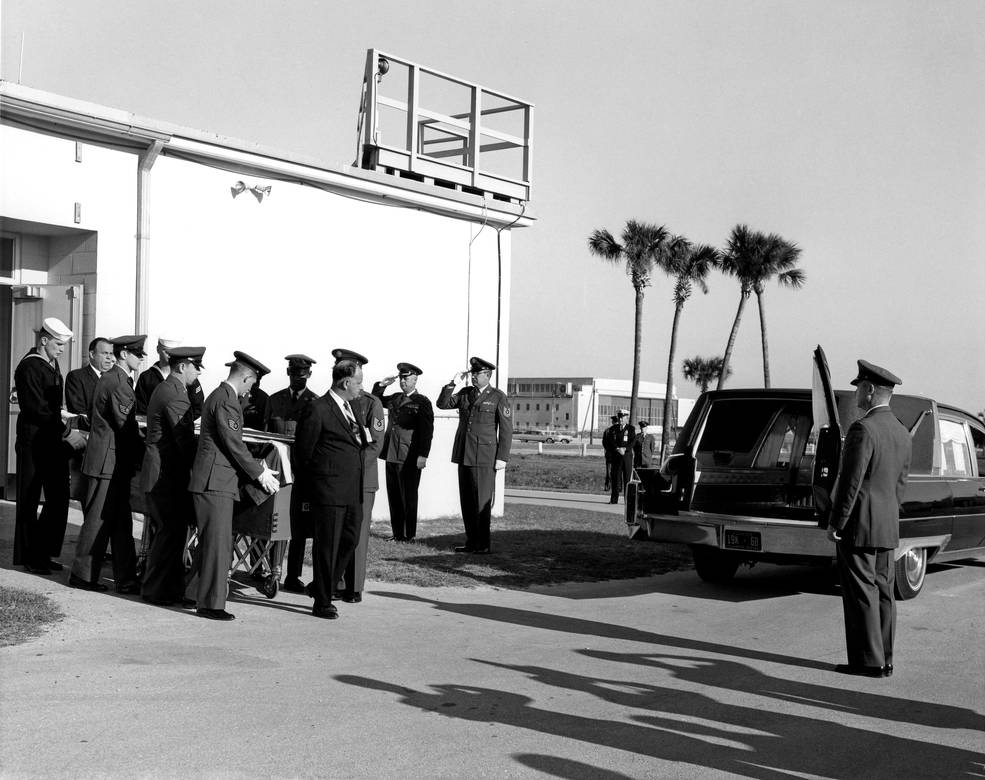
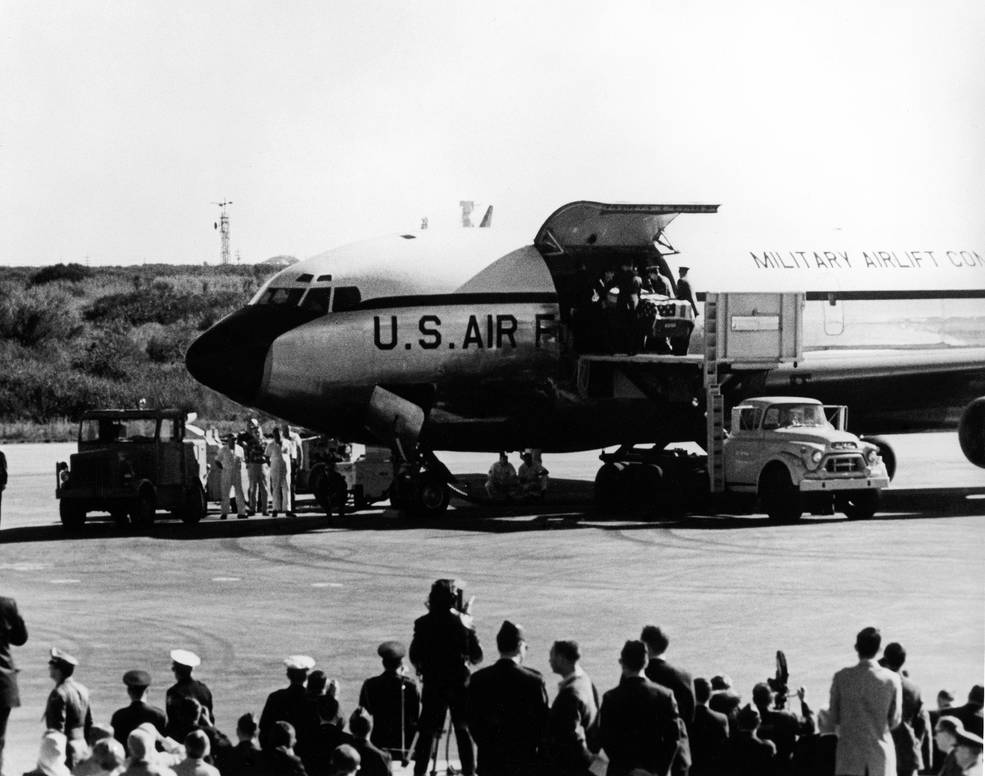
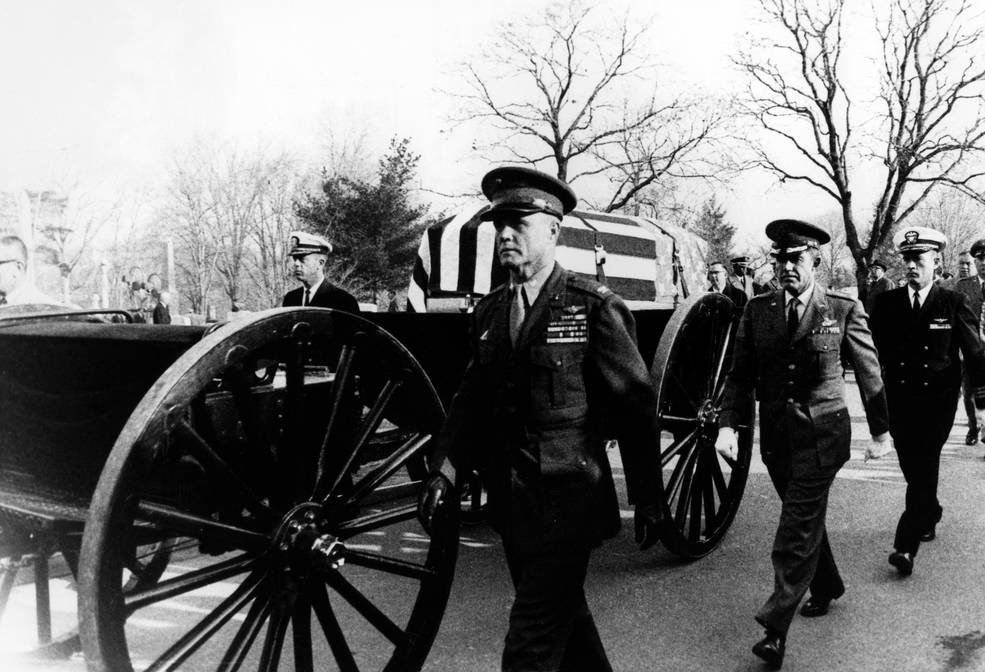
Left: At NASA’s Kennedy Space Center in Florida, soldiers load astronaut Virgil I. “Gus” Grissom’s coffin into a hearse. Middle: At Cape Kennedy, the astronauts’ coffins are loaded onto a cargo plane. Right: Fellow astronauts accompany Grissom’s coffin during his funeral at Arlington National Cemetery.
On Jan. 29-30, separate memorial services for each of the astronauts were held in Houston. Attendees included Robert R. Gilruth, director of the Manned Spacecraft Center (MSC), now NASA’s Johnson Space Center in Houston, Wernher von Braun, director of NASA’s Marshall Space Flight Center in Huntsville, Alabama, George E. Mueller, associate administrator for manned space flight at NASA Headquarters in Washington, D.C., and many of their fellow astronauts. On Jan. 31, the nation honored the fallen astronauts with full military honors at their individual funerals. Grissom and Chaffee were buried at Arlington National Cemetery, attended by President Lyndon B. Johnson, and White at the West Point Military Academy, attended by First Lady “Lady Bird” Johnson and Vice President Hubert H. Humphrey. Fellow astronauts from their respective classes served as pall bearers.
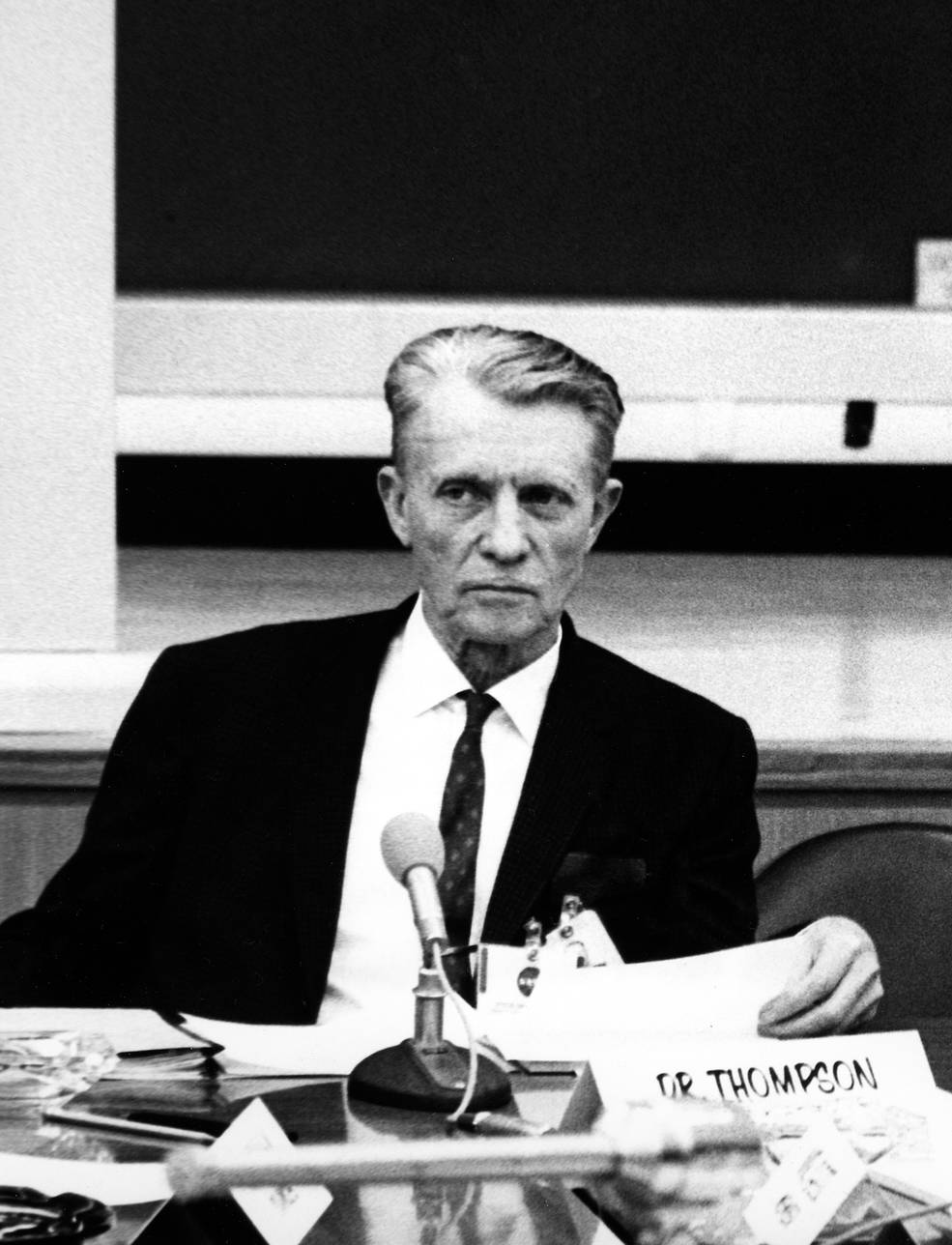
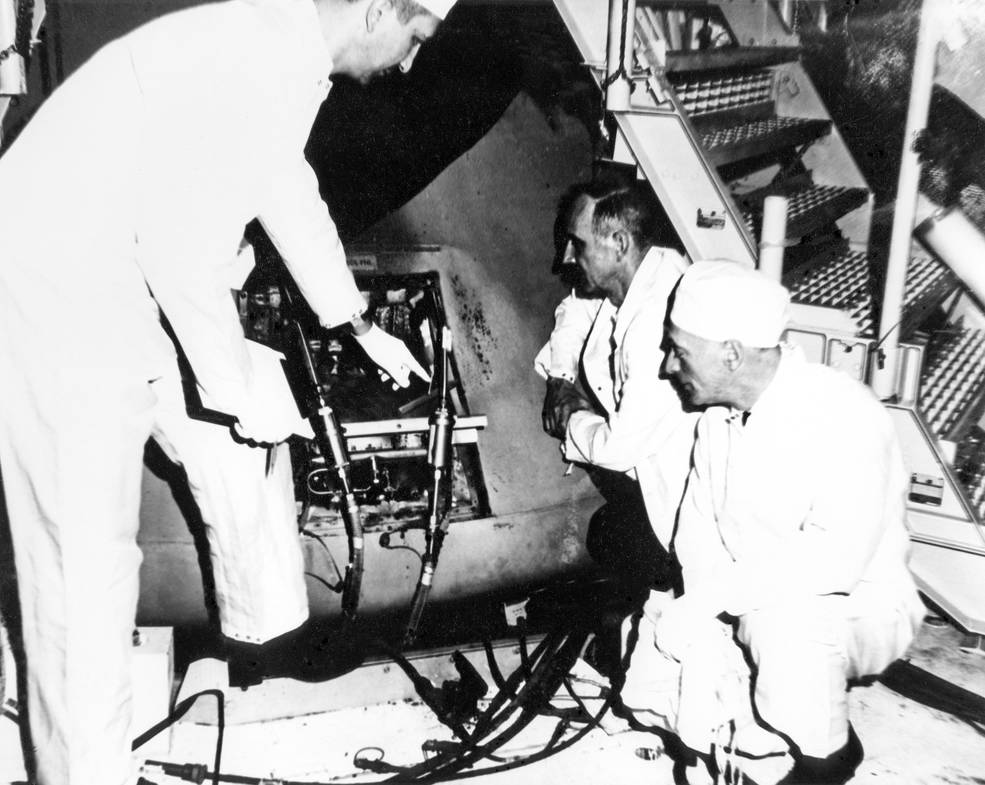
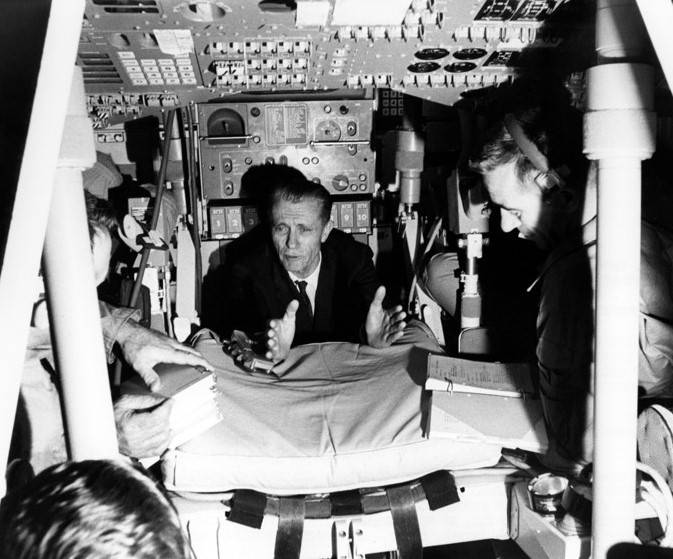
Left: Floyd L. Thompson, director of NASA’s Langley Research Center in Hampton, Virginia, chairman of the Apollo 204 Review Board. Middle: Investigators examine the fire-damaged Apollo 1 spacecraft atLaunch Complex 34. Right: Astronauts James A. Lovell, left, and R. Walter Cunningham provide a description of the Apollo Spacecraft Simulator at NASA’s Kennedy Space Center in Florida to Board Chairman Thompson, center.
Immediately after the accident, NASA’s Kennedy Space Center (KSC) in Florida placed LC-34 under additional security and impounded all materials in the spacecraft, on the pad service structure, and in the control rooms active during the accident. On Jan. 28, Deputy NASA Administrator Robert C. Seamans established the Apollo 204 Review Board to investigate the causes of the accident, naming Floyd L. Thompson, director of NASA’s Langley Research Center in Hampton, Virginia, as chair and seven other members including Maxime A. Faget, MSC’s director of engineering and development, and astronaut Frank Borman. The Board first met on Jan. 28, and visited the scene of the accident at LC-34. Over the next several days, the Board conducted interviews with witnesses to the accident and established 21 panels to handle various aspects of the investigation. The Board provided weekly status reports to Seamans, who in turn submitted reports to NASA Administrator James E. Webb.
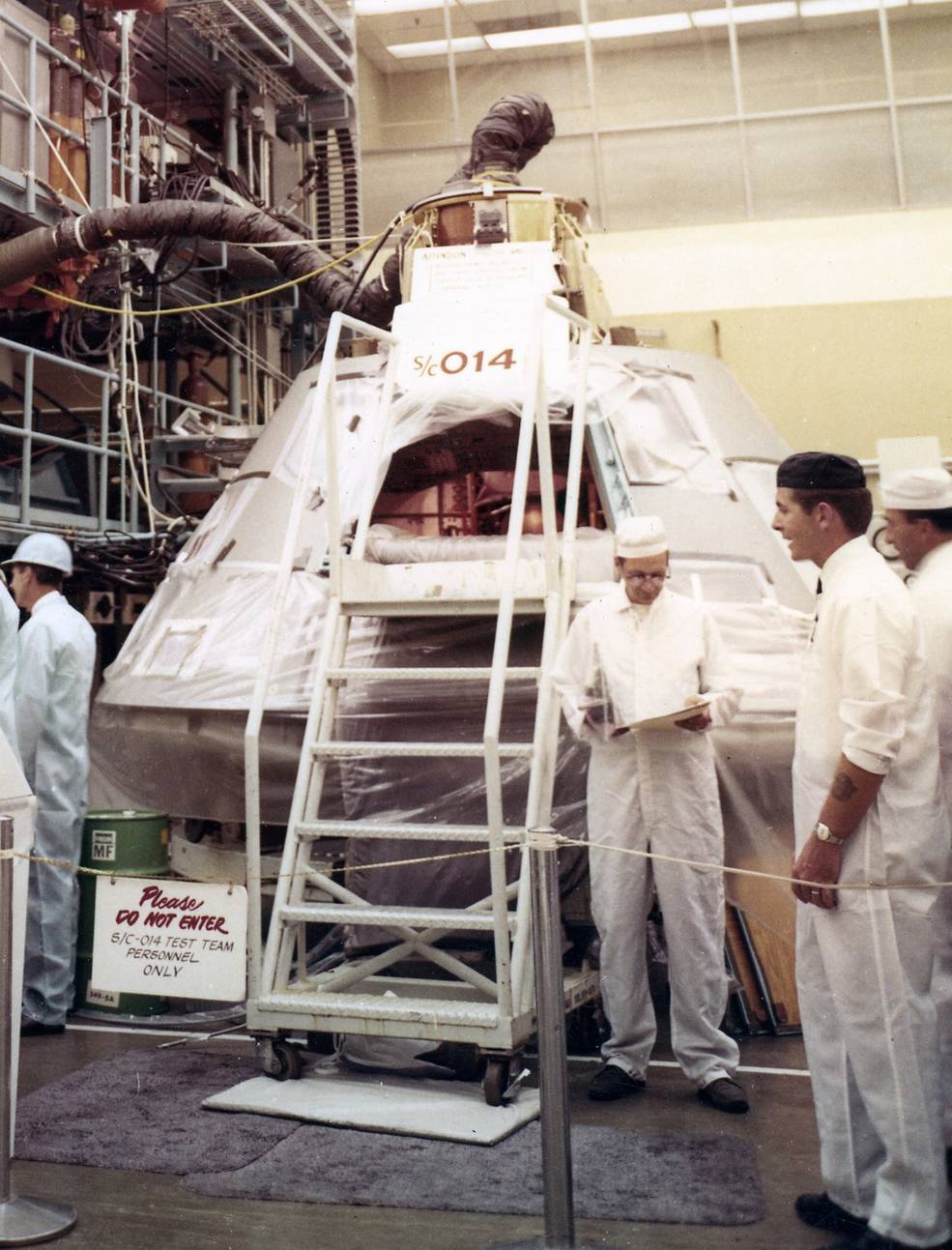
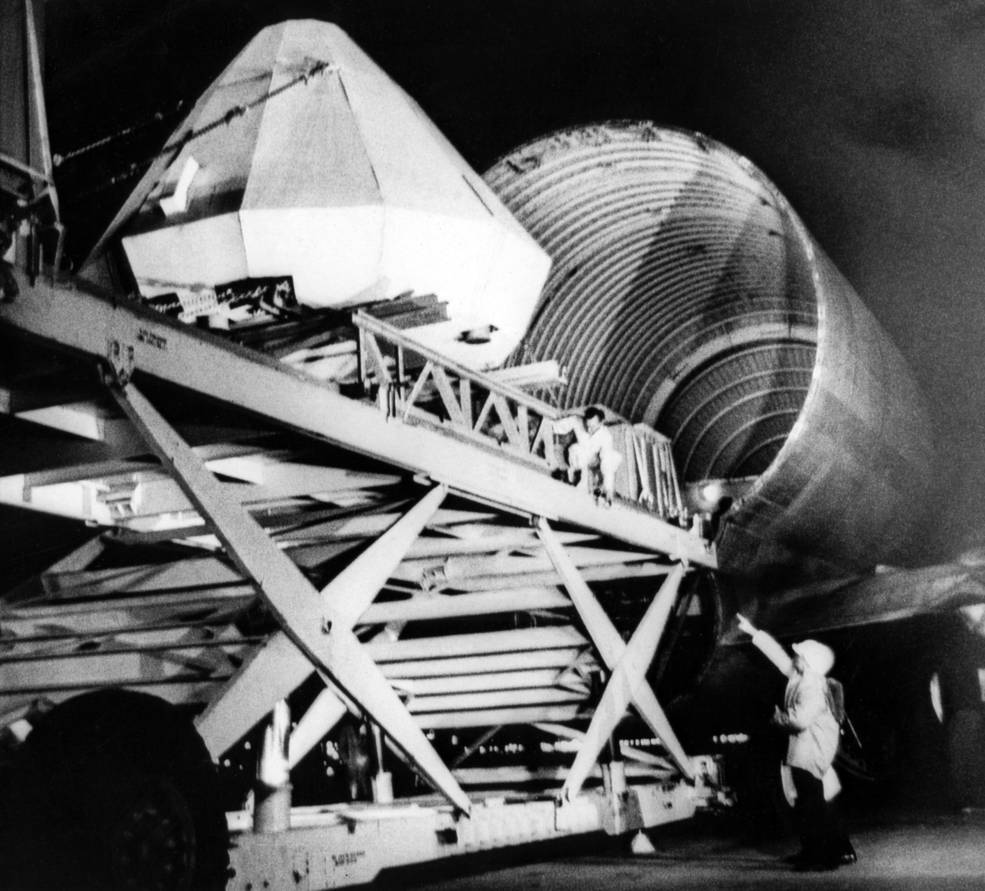
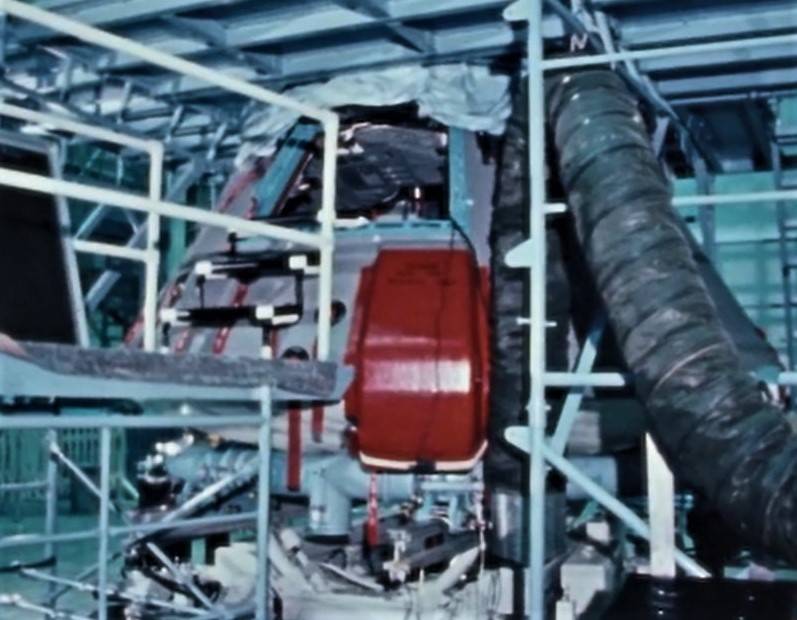
Left: Apollo Command Module-014 (CM-014) under construction at North American Aviation’s Downey, California, plant in July 1966. Middle: Ground crews loading CM-014 onto a cargo plane bound for NASA’s Kennedy Space Center (KSC) in Florida to support the Apollo 1 accident investigation. Right: CM-014 in KSC’s Pyrotechnics Installation Building.
In their attempt to localize the source of the fire and determine its spread through the spacecraft, known by its serial number 012, investigators needed to document, remove, and inspect its components. To aid in that effort, NASA shipped CM-014, a near-identical twin of CM-012, from the North American Aviation (NAA) plant in Downey, California. It arrived at KSC on Feb. 1, and workers placed it in the Pyrotechnics Installation Building (PIB). Engineers practiced removal procedures on CM-014 before attempting the more difficult process on the fire-damaged CM-012. Hardware removal operations began with the spacecraft still at LC-34, after removal of the Launch Escape System tower with its solid propellant fuel. Workers transported the removed items to a bonded area in the PIB and placed them on tables for investigation.
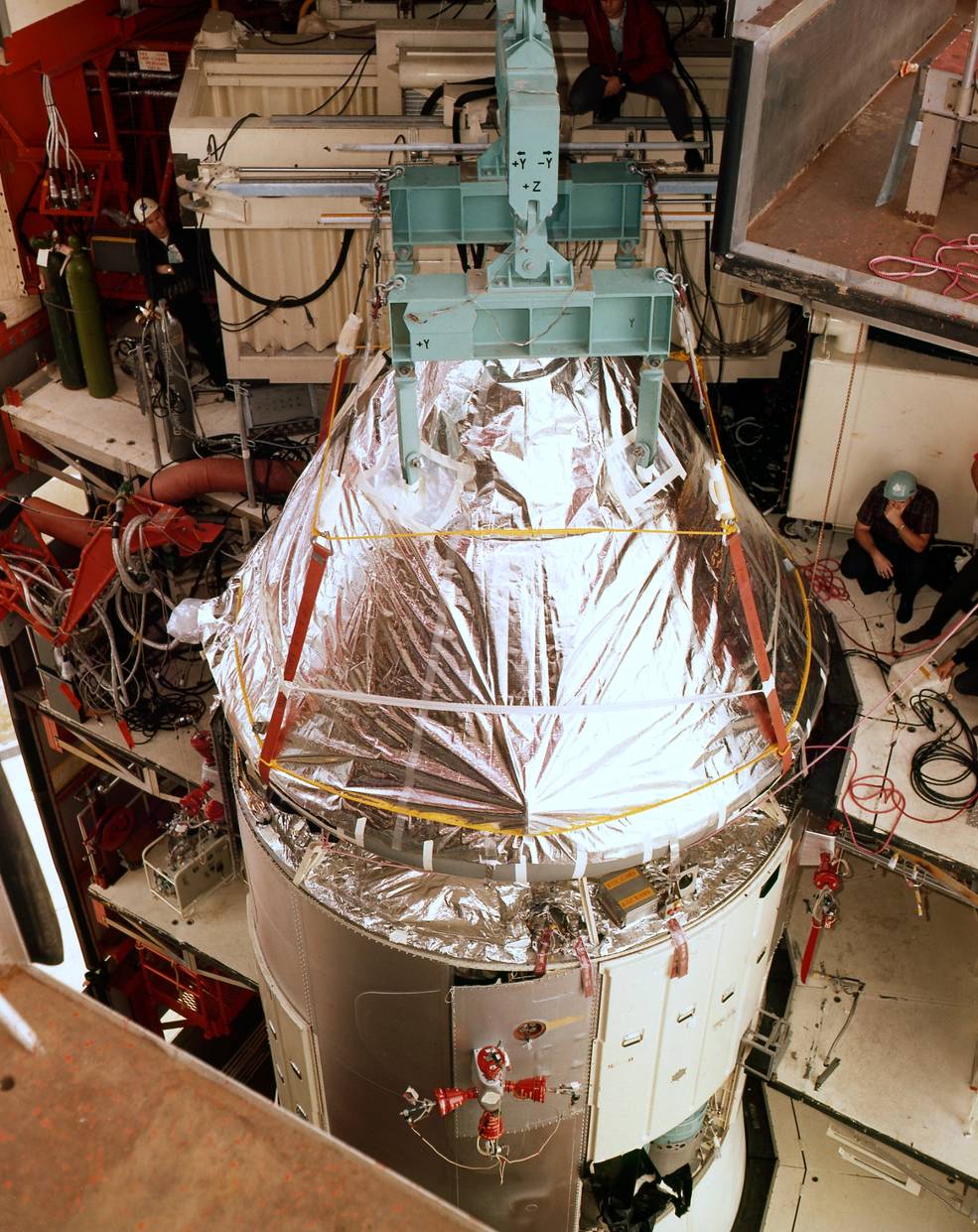
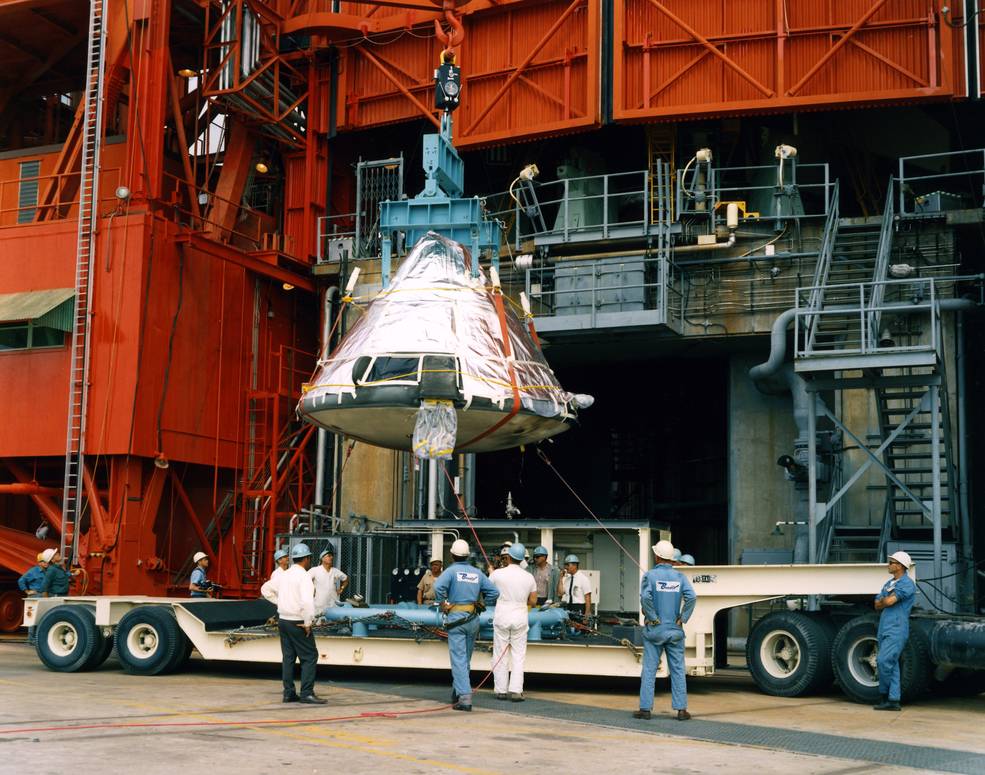
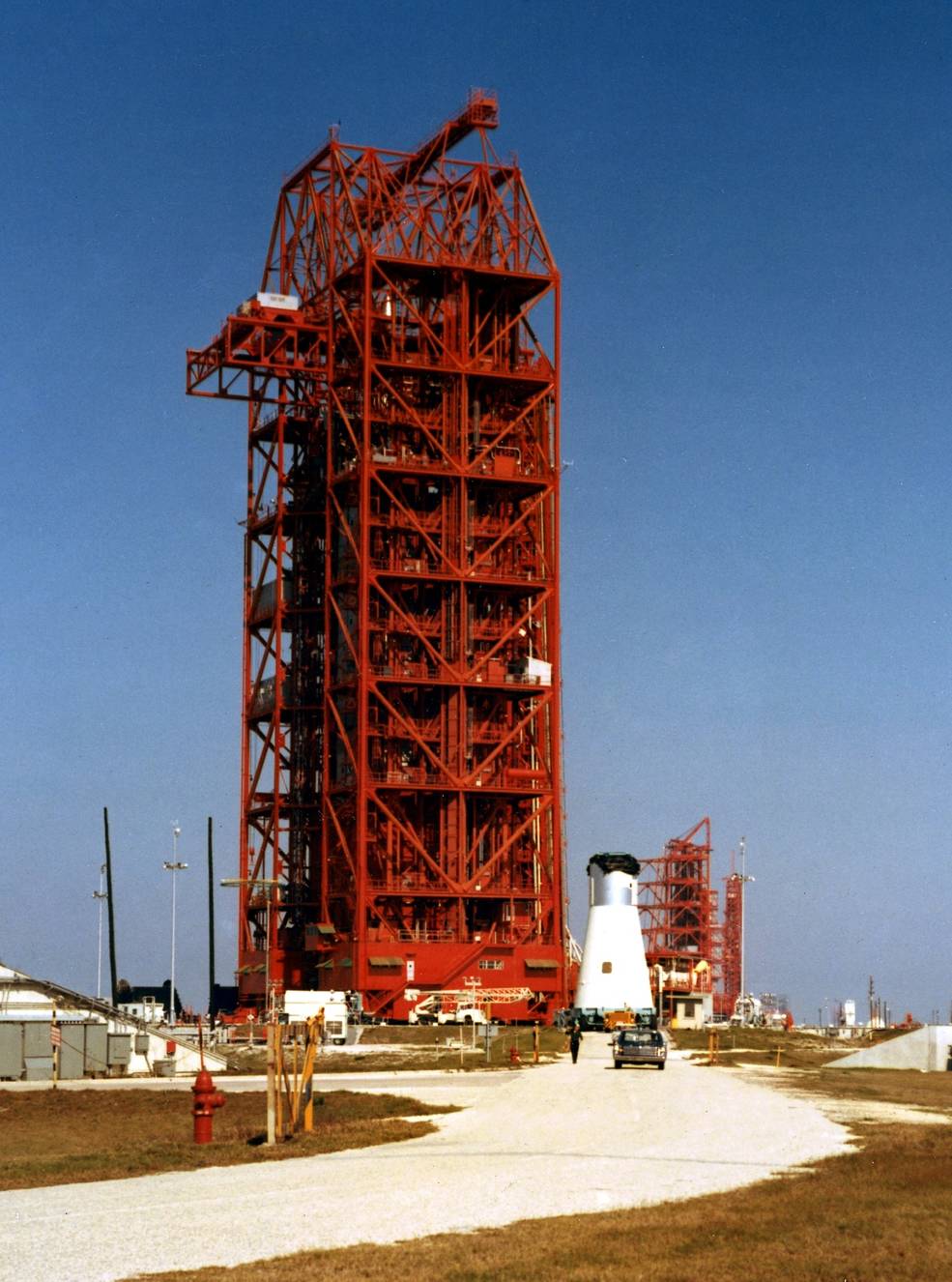
Left: At Cape Kennedy’s Launch Complex 34 (LC-34), ground crews prepare to lift the Apollo 1 Command Module (CM) from its Service Module (SM). Middle: Ground crews lower the CM onto its transport truck. Right: Ground crews transport the SM atop its Spacecraft Lunar Module Adapter from LC-34 to the Manned Spacecraft Operations Building.
On Feb. 17, using a special sling, ground crews removed the damaged CM-012 from the rocket and transported it to the PIB, where hardware removal and spacecraft disassembly could proceed in a safer environment. Pad crews examined the Service Module (SM), and on Feb. 23 removed it along with the Spacecraft Lunar Module (LM) Adapter from the rocket and trucked it to KSC’s Manned Spacecraft Operations Building.
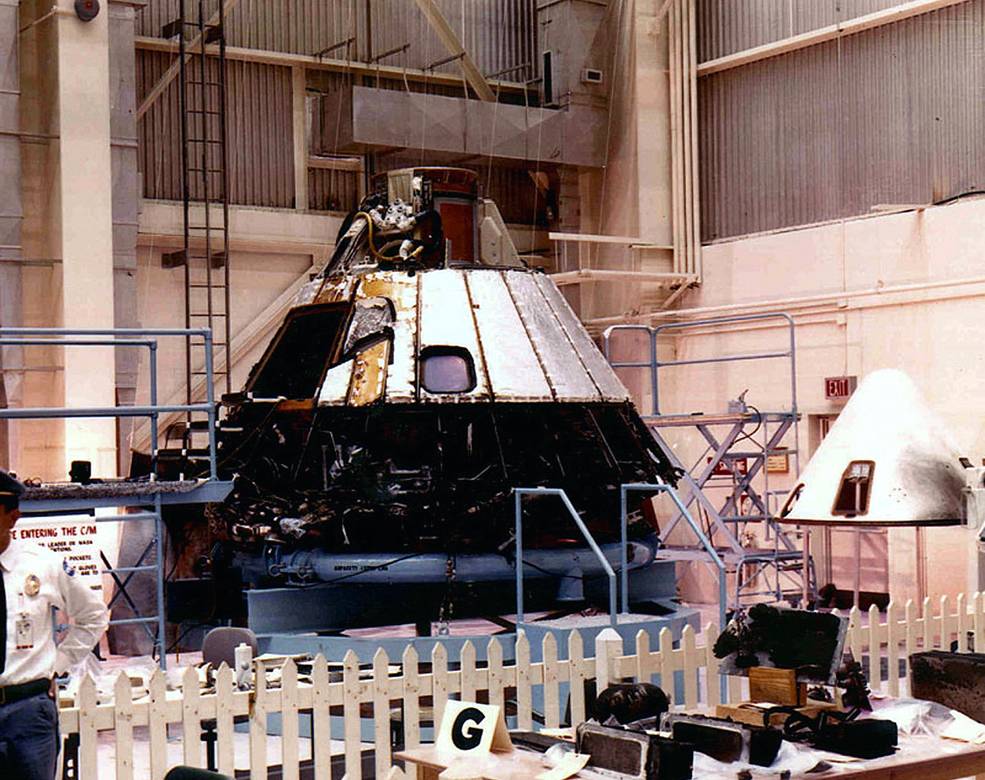
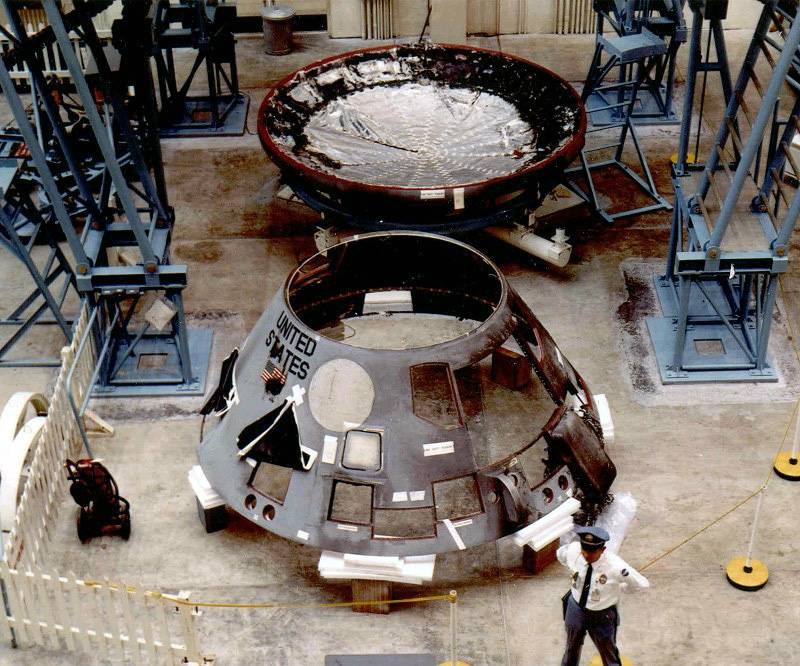
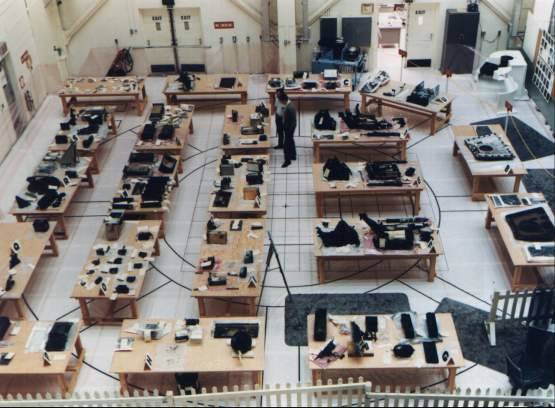
Left: The external heat shield has been removed from the Apollo 1 Command Module (CM) in the Pyrotechnics Installation Building (PIB) at NASA’s Kennedy Space Center in Florida during the investigation. Middle: The aft heat shield, at top, and the crew compartment heat shield of the Apollo 1 spacecraft in the PIB. Right: Parts removed from the Apollo 1 CM are sorted on tables in the PIB for investigators to examine.
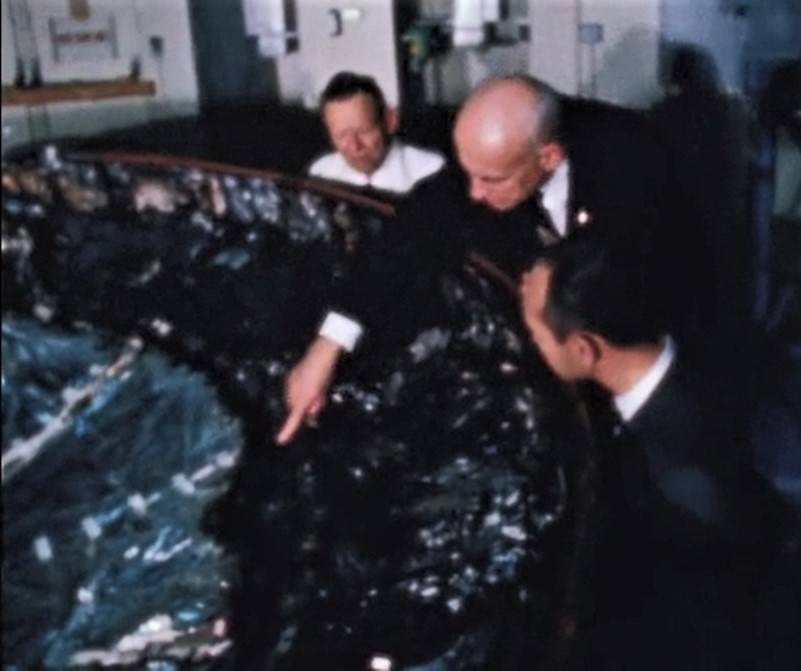
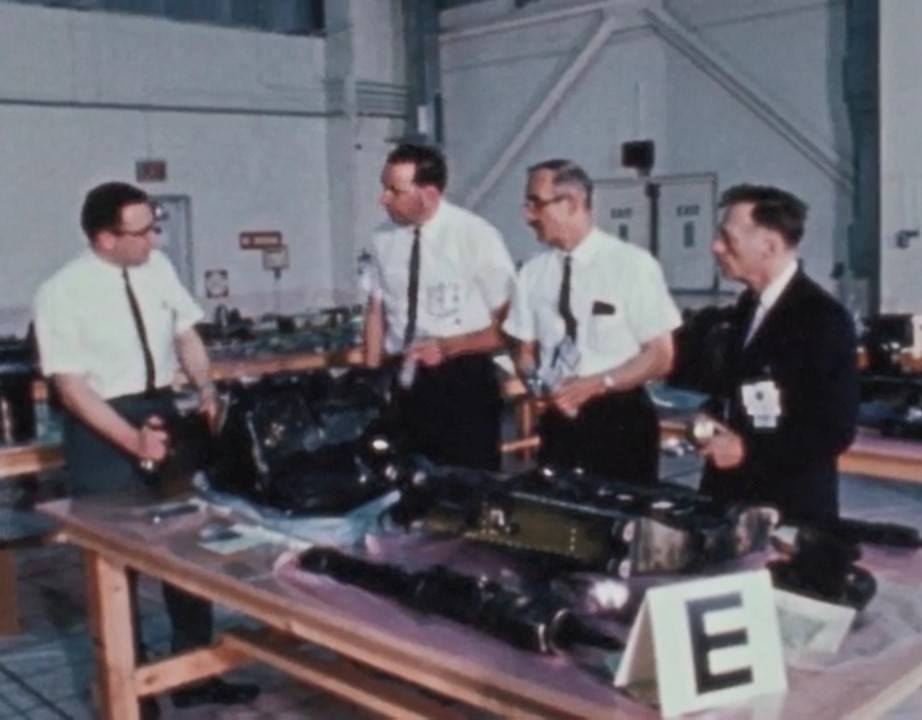
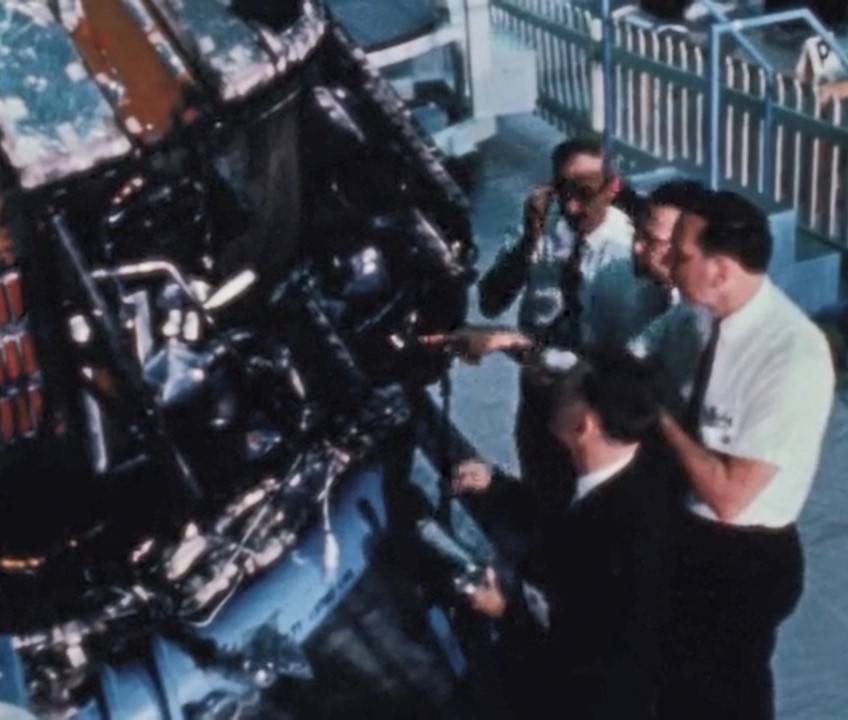
Left: Robert R. Gilruth, director of the Manned Spacecraft Center (MSC), now NASA’s Johnson Space Center in Houston, center, points out a feature of the Apollo 1 Command Module’s (CM) aft heat shield to Maxime A. Faget, MSC’s director of engineering and development and Apollo 204 Review Board member. Middle: Floyd L. Thompson, chairman of the Apollo 204 Review Board, right, inspects a crew couch removed from the Apollo 1 CM with other Board members. Right: Thompson, in black suit, inspects burned areas of the Apollo 1 CM with other Board members.
On March 7-9, workers in the PIB removed the spacecraft’s aft heat shield to enable inspection of its inner surface, relocated the capsule to another work site and removed the crew compartment heat shield to allow better visualization of where the fire breached the pressure vessel. Disassembly of CM-012 was completed on March 27, with 1,261 individual items logged, about 1,000 of them from the CM.
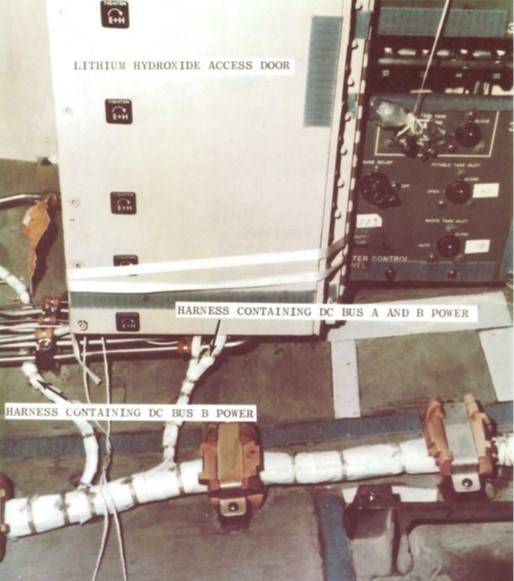
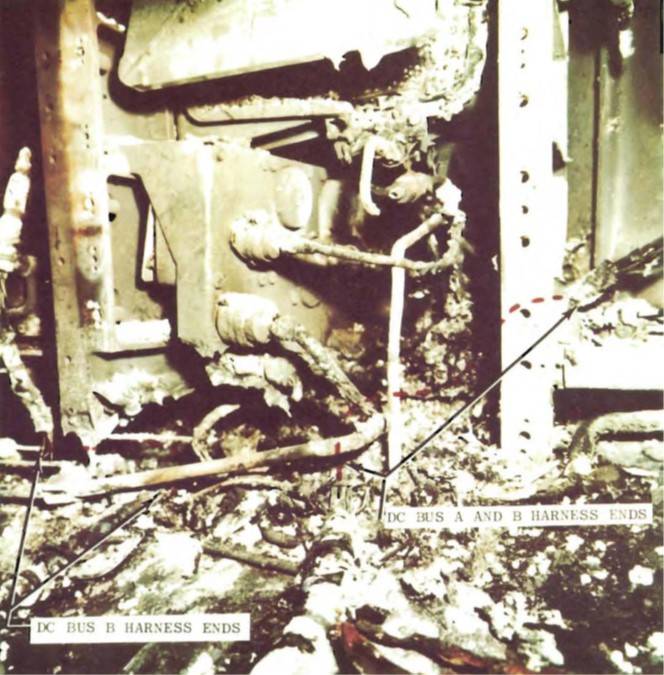
Area of the Apollo Command Module (CM) where the fire is believed to have started. Left: In the intact CM-014 spacecraft. Right: The same area in the fire-damaged CM-012 spacecraft.
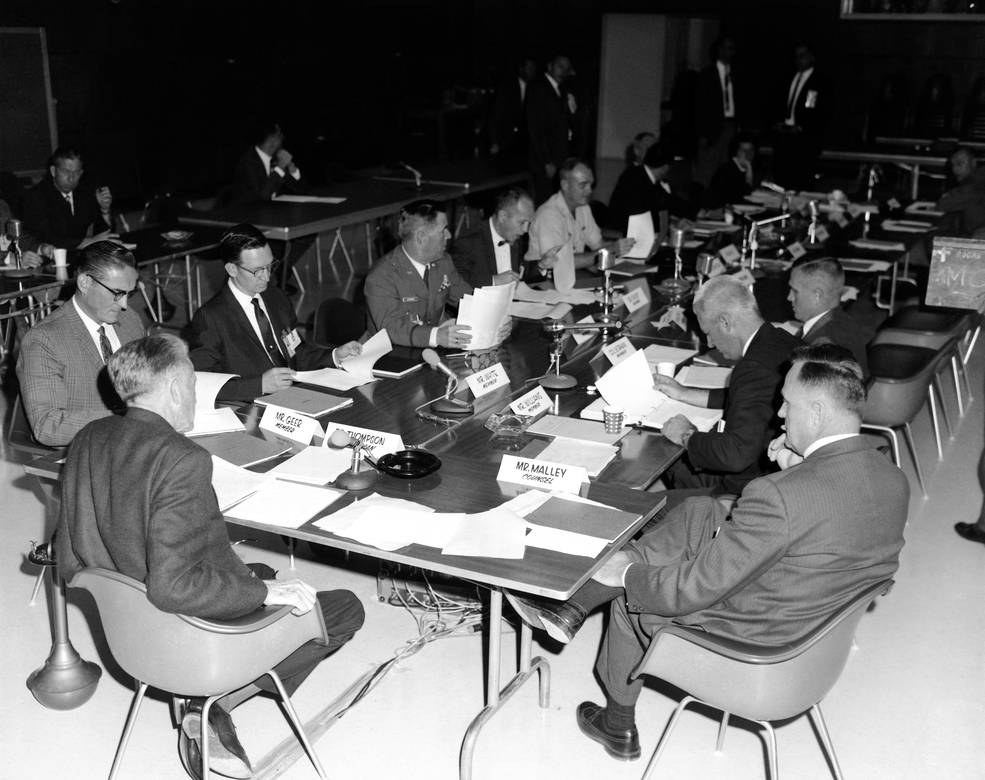
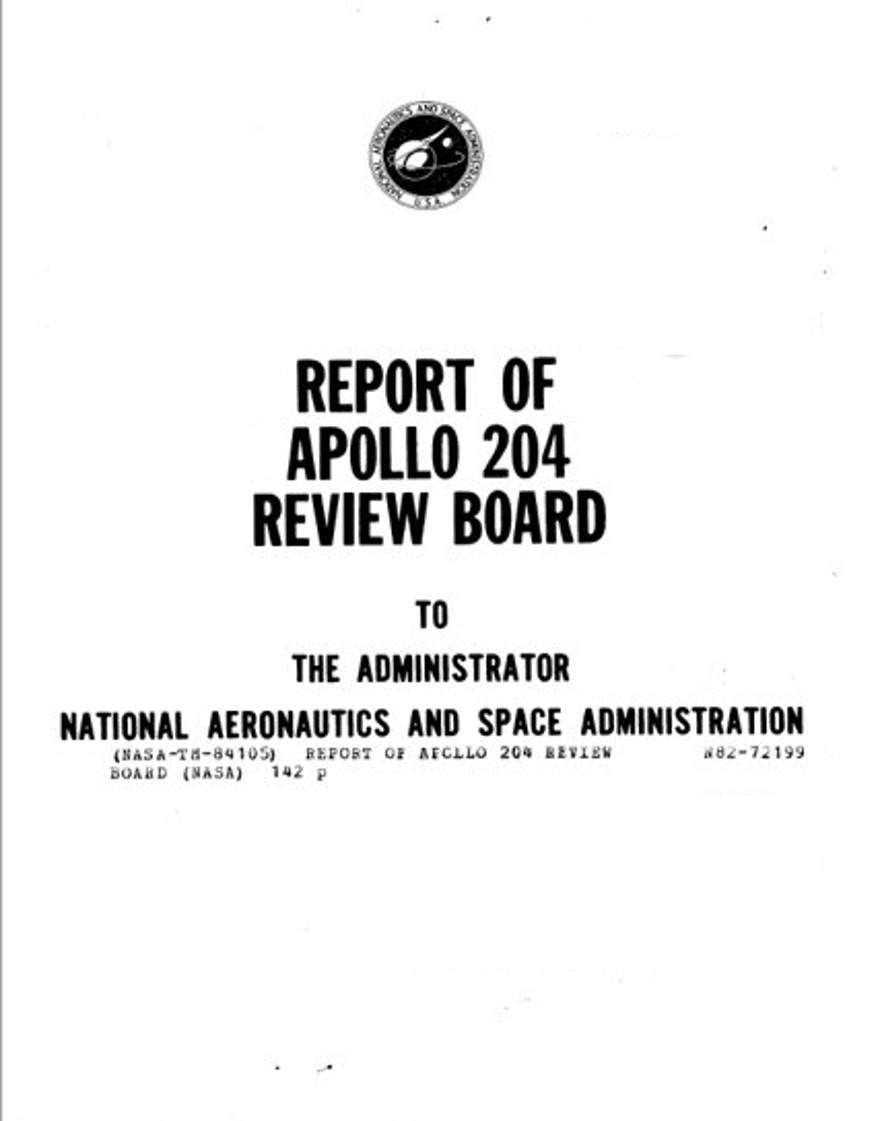
Left: The Apollo 204 Review Board during one its last meetings. Right: The cover page of the Apollo 204 Review Board’s final report.
The Board released its 3,000-page report on April 9. Although they couldn’t determine a specific source of ignition, investigators found evidence of arcing in several wires in the spacecraft underneath Grissom’s left hand couch, near the environment control system. That area of the spacecraft received the most severe fire damage. Because of the pure oxygen atmosphere, pressurized to 16.7 psi – two pounds above atmospheric pressure and a larger-than-allowable amount of flammable material in the spacecraft – the fire spread very rapidly. The fire caused a rapid rise in temperature and pressure, resulting in the rupture of the CM pressure vessel and generating toxic chemicals such as carbon monoxide, leading to the death of the astronauts by asphyxiation. The design of the three-piece hatch, with the innermost one opening inward and taking 90 seconds to open under ideal conditions and impossible under the increased pressure, prevented the astronauts from exiting the spacecraft. Because the test took place with the rocket unfueled, it had been considered non-hazardous and was not reviewed by the relevant safety organizations. Therefore, no provisions were made for rescuing the astronauts or treating injured crew members or pad crew in case of an accident.
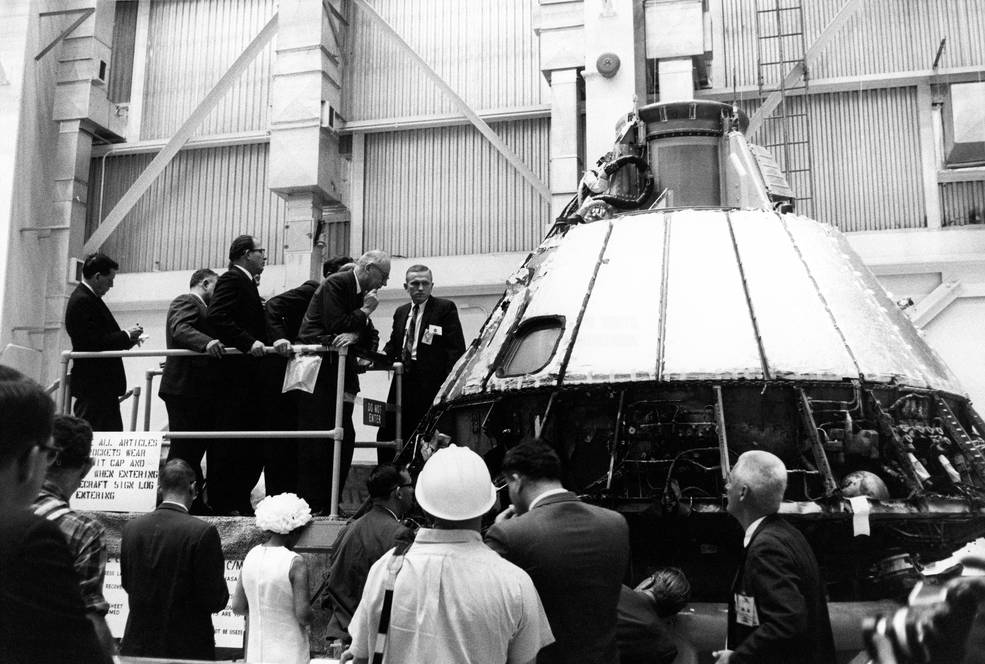
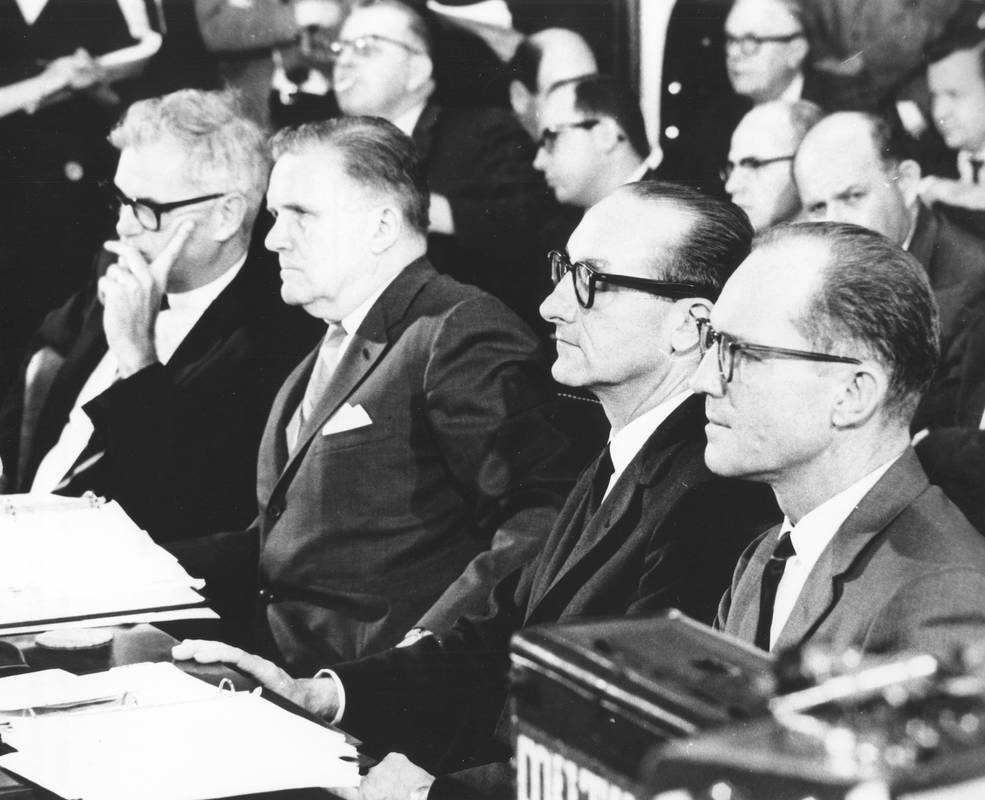
Left: Astronaut Frank Borman gives a tour of CM-012 to members of the House of Representatives subcommittee during their visit to NASA’s Kennedy Space Center in Florida. Right: Testifying before the Senate Committee on Aeronautical and Space Sciences on the Apollo 1 accident are NASA Deputy Administrator Robert C. Seamans, left, James E. Webb, NASA administrator, George E. Mueller, associate administrator for manned space flight, and Samuel C. Phillips, Apollo program director.
Both houses of Congress held hearings to understand the report’s findings and especially NASA’s plans to prevent a recurrence of the accident. The House Committee on Science and Astronautics’ Subcommittee on NASA Oversight held hearings April 10-12, 17, and 21, and May 10. The Senate Committee on Aeronautical and Space Sciences hearings were held April 11, 13, and 17, and May 4 and 9. Senior NASA leadership and astronauts testified before the committees about NASA’s responses to the Board’s findings and recommendations. The committee members visited KSC to see firsthand the Apollo 1 spacecraft and other facilities related to the fire.
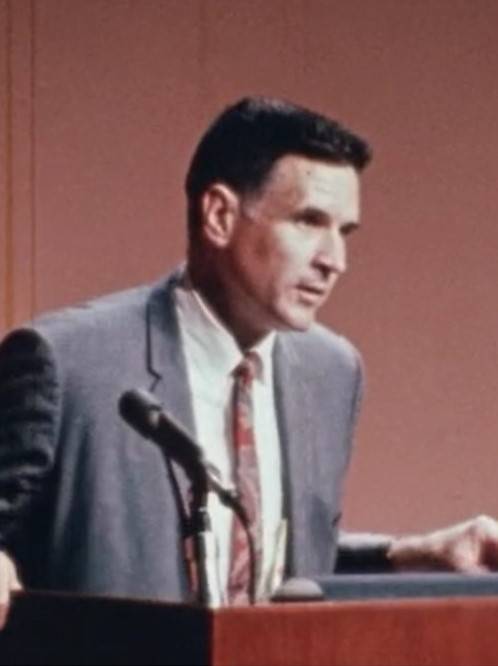
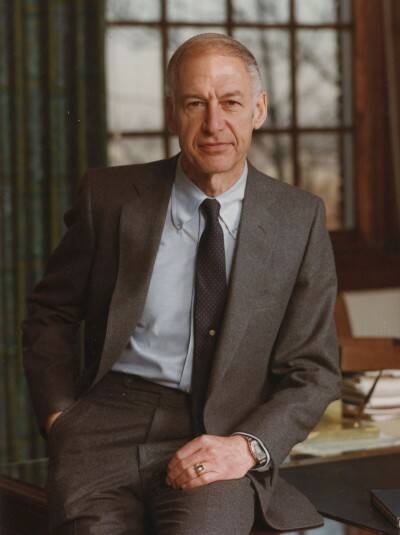

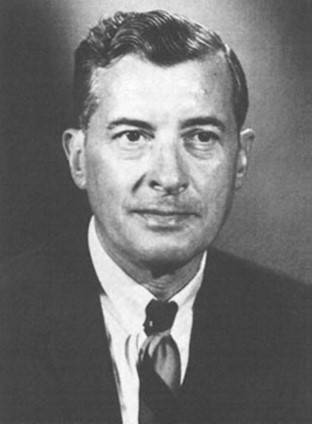
Left: Joseph F. Shea, Apollo Spacecraft Program Office (ASPO) manager at the time of the Apollo 1 fire. Middle left: George M. Low succeeded Shea as ASPO manager. Middle right: Harrison A. Storms, manager of Apollo spacecraft development at North American Aviation’s (NAA) space division at the time of the Apollo 1 fire. Right: William B. Bergen took over as president of NAA’s space division in April 1967.
Among the management changes in the wake of the Apollo 1 accident, on April 5 Associate Administrator for Manned Space Flight Mueller announced that Joseph F. Shea, Apollo Spacecraft Program Office (ASPO) manager since October 1963, would become his deputy at NASA Headquarters in Washington, D.C., with responsibility for technical aspects of the human spaceflight program. Mueller named MSC Deputy Director George M. Low as the new ASPO manager, effective April 10. On July 25, Shea announced his resignation from NASA effective Aug. 1 to become a vice president of the Polaroid Corp. At NAA, William B. Bergen, former president of Martin Marietta Co., on April 7 replaced Harrison A. Storms as president of the division in charge of the Apollo spacecraft. In the area of organizational changes, MSC Director Gilruth established a Safety, Reliability, and Quality Assurance Office, today known as the Safety and Mission Assurance Directorate, independent of the Apollo Spacecraft Program Office and reporting directly to the center director. At the agency level, NASA established the Aerospace Safety Advisory Panel (ASAP) for independent safety oversight. The ASAP is still active today.
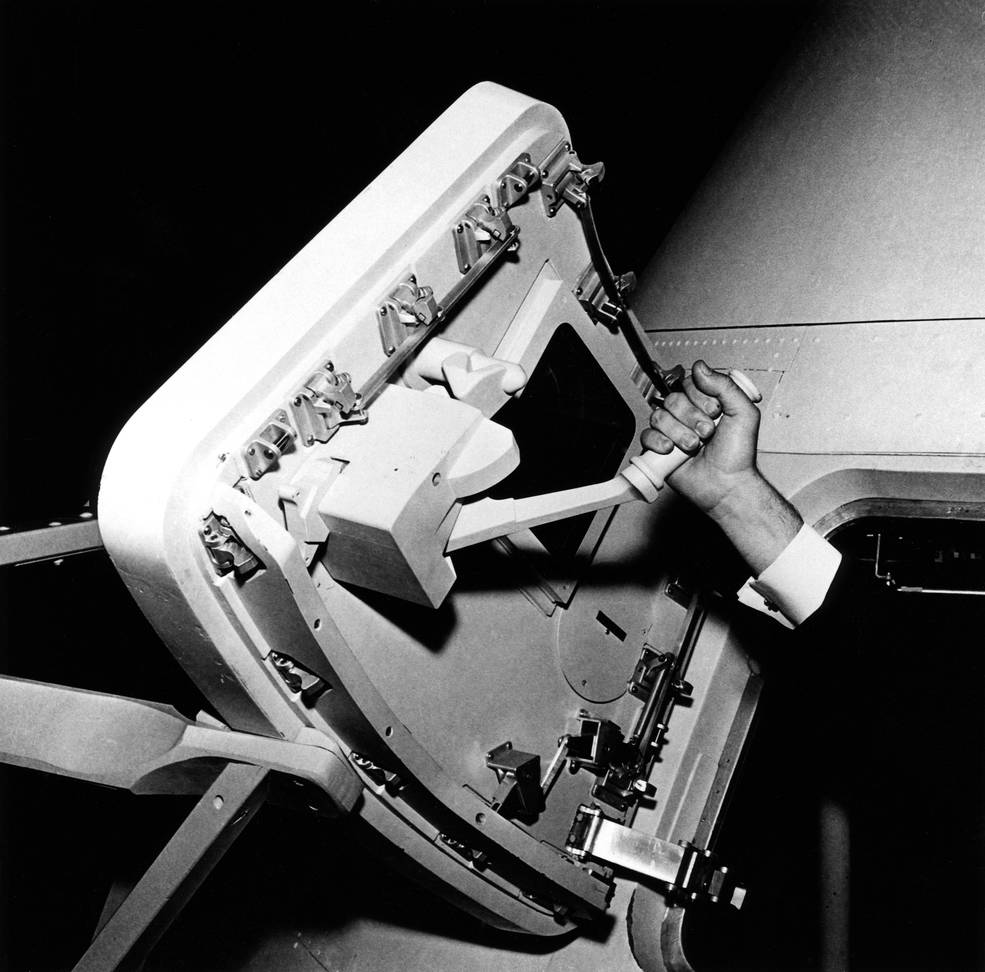
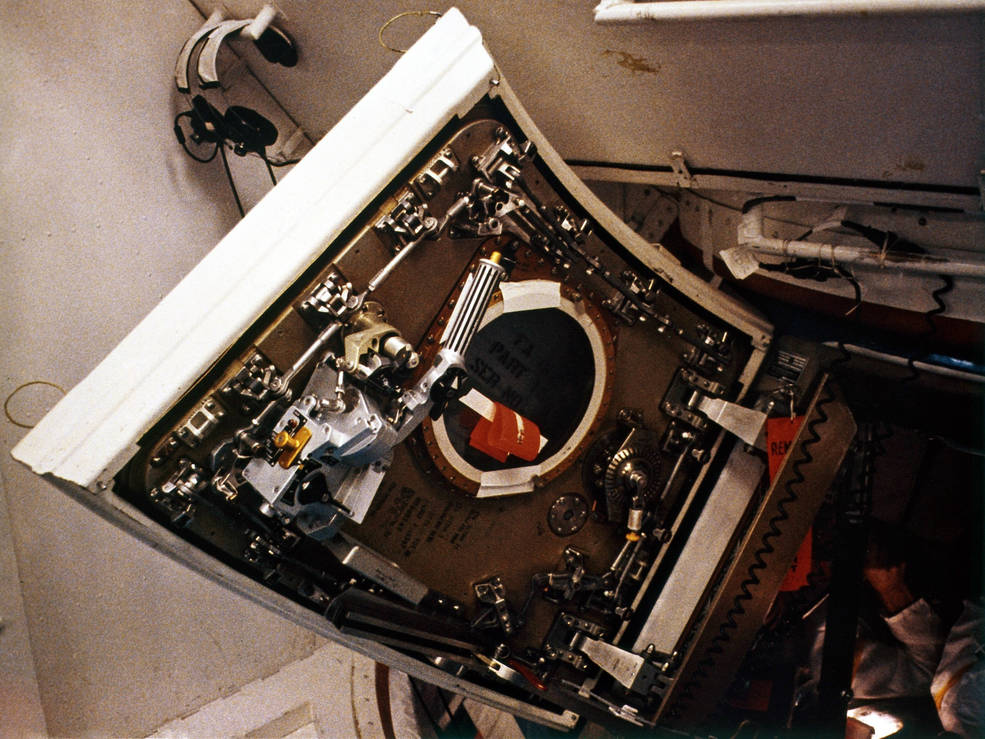
Left: An early prototype of the unified Apollo hatch design.
Right: The unified hatch installed on the Apollo 7 spacecraft.
Following the fire, NASA decided that all subsequent Apollo crews would fly aboard the more advanced Block II version of the spacecraft, not the Block I assigned to Apollo 1. Unlike the Block I version, Block II CM’s included a docking probe and a transfer tunnel enabling docking with the LM and internal crew transfers between the two docked vehicles. The most significant hardware change to the Apollo spacecraft as a result of the fire involved replacing the difficult-to-open three-piece hatch with a unified hatch that could be opened from inside or outside the spacecraft in three seconds. NASA instituted a new approach to the selection and placement of materials, severely restricting and controlling the amount and location of combustible material in the spacecraft. Although the fire took place in the CM, NASA instituted these changes in the LM as well to reduce the risk of fire and to increase crew safety. NASA developed a new spacesuit that used fire resistant materials.
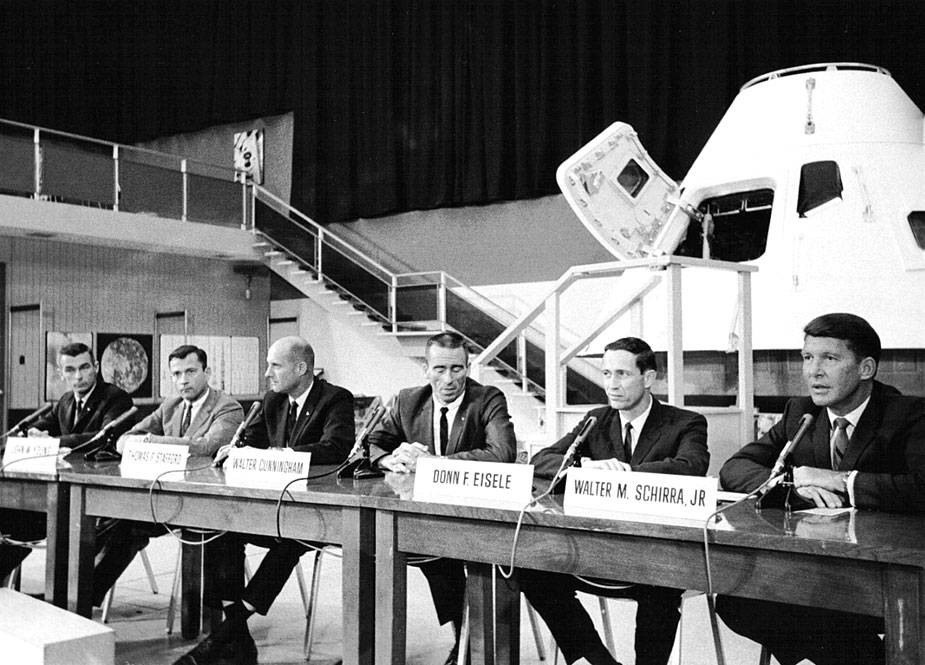
Prime and backup crews for the first piloted Apollo mission at the May 10, 1967 news conference at North American Aviation’s Downey, California, plant – Eugene A. Cernan, left, John W. Young, Thomas P. Stafford, R. Walter Cunningham, Donn F. Eisele, and Walter M. Schirra. The new unified hatch can be seen on the spacecraft mockup behind them.
On May 9, NASA announced that the Apollo 1 backup crew of Walter M. Schirra, Donn F. Eisele, and R. Walter Cunningham would fly the first crewed Apollo mission, possibly as early as spring 1968, with Thomas P. Stafford, John W. Young, and Eugene A. Cernan as their backups. The next day, the six astronauts held a press conference in Downey, where they expressed satisfaction with the changes being made to make their spacecraft safe to fly. Specifically, they cited the new outward-opening unified hatch, removal or replacement of flammable materials, protection of wiring bundles, and flame-resistant spacesuits.
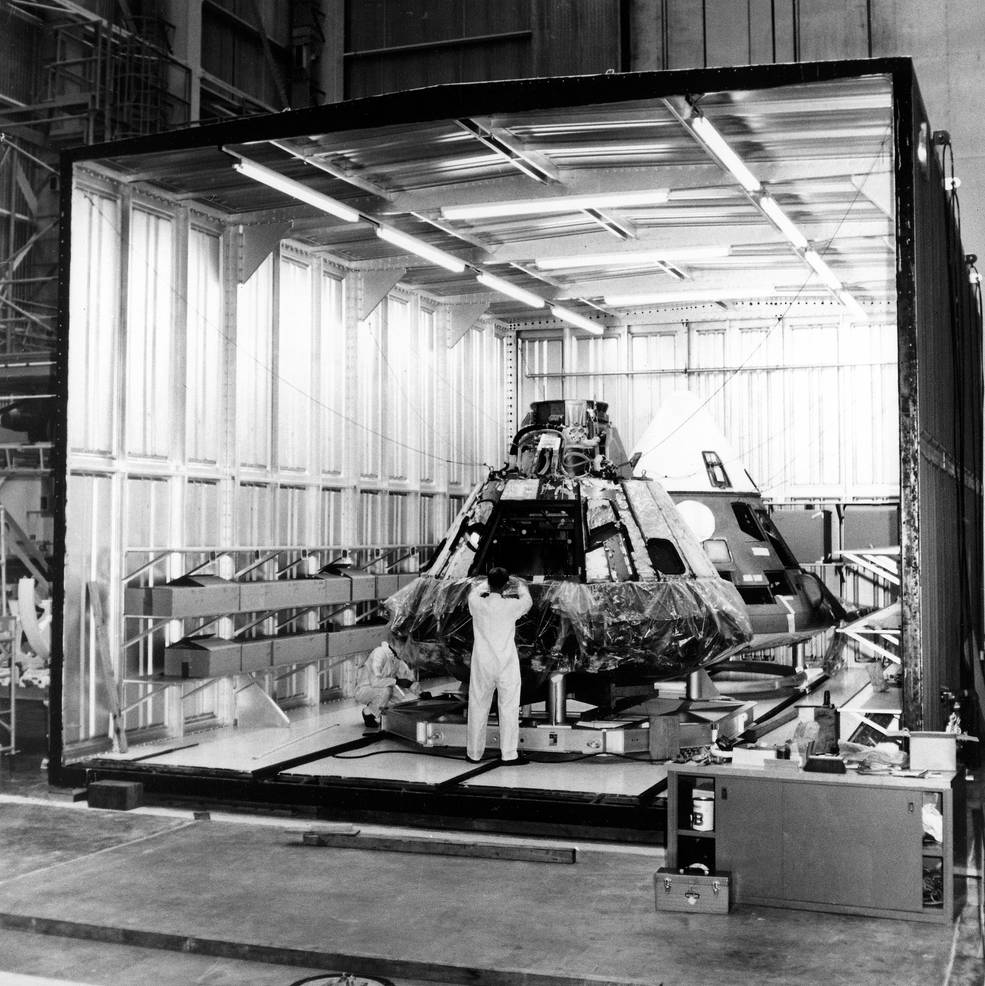
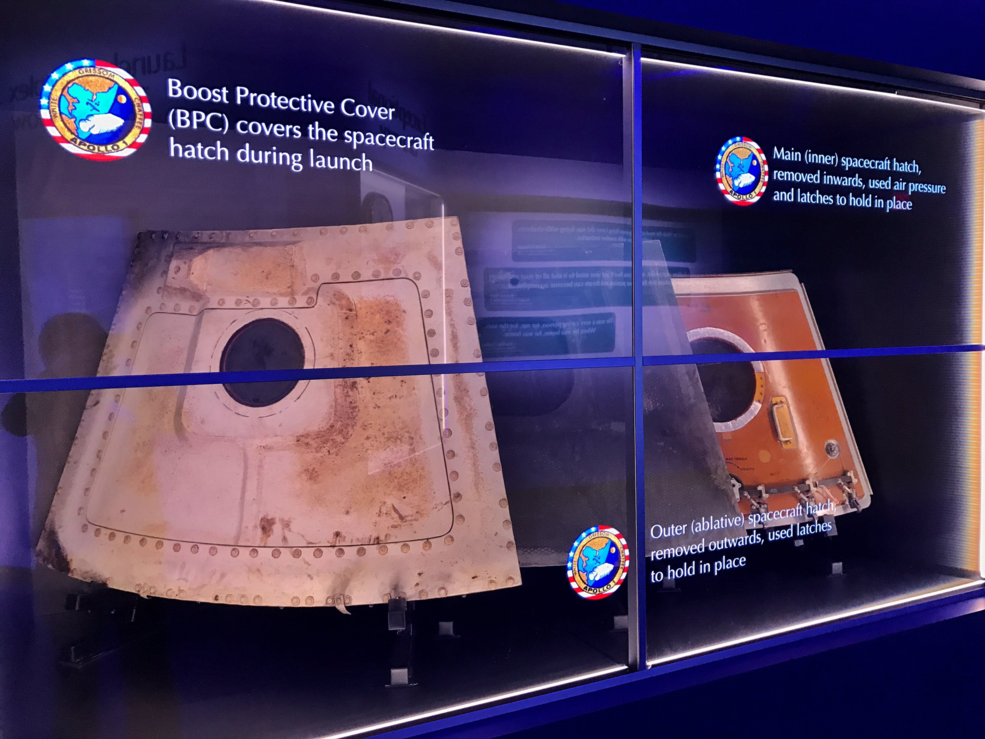
Left: Workers prepare the Apollo 1 spacecraft for shipment to NASA’s Langley Research Center in Hampton, Virginia, for long-term storage. Right: The three hatches from the Apollo 1 spacecraft are on display at the Apollo/Saturn V Center at NASA’s Kennedy Space Center in Florida.
After the conclusion of the investigation, on July 9, 1967, the Apollo 1 CM was transported to a long-term secure facility at Langley, as directed by the Review Board. Over the years, that facility deteriorated, and the CM was relocated on Feb. 17, 2007, to a newer, environmentally-controlled warehouse about 90 feet away. Although the capsule remains in its storage facility, in honor of the 50th anniversary of the accident in 2017, NASA decided to display the spacecraft’s three-piece hatch at KSC’s Apollo/Saturn V Center, where it can be seen today.





























